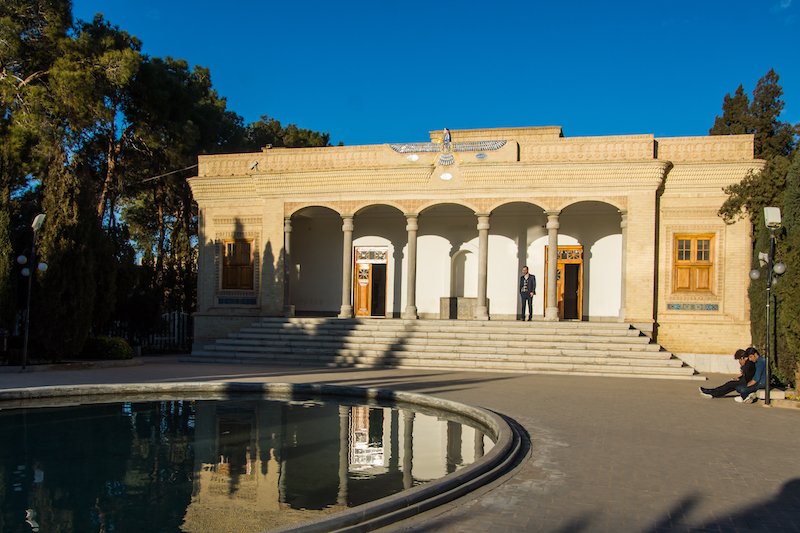ZOROASTRIAN SACRED PLACES IN YAZD
And here we were on the road again on a different quest, to visit the Zoroastrian sacred places in Yazd. We left early morning direction Chak Chak to visit the Zoroastrian temple of Pir-e Sabz. It is considered the most sacred Zoroastrian Fire Temple.
The scenery was stunning with mountain ranges and little vegetation. The harsh environment made you wonder why such a place was chosen for a sacred temple.
To understand why, we need to go back about 3500 years, when Zoroastrianism was established as a new religion. A new religion which brought a big change.
From the worship of a multitude of Gods to the worship of a monotheistic God. A spiritual, invisible God, Ahura Mazda, who embodied all wisdom. A god who had created the universe to defeat evil. Zoroastrians believe there is a negative force or evil spirit that needs to be defeated. By seeking the truth and righteous path, you can defeat evil. Each individual can make his own destiny by choosing a good or evil path. At the end of time you will be judged and will either go to paradise or to hell.
When Zarathustra or Zoroaster, the prophet who had come from a family of priests, introduced the new religion, he was met with great resistance, in particular from the class of the Magi, the priesthood. Some concepts were regarded as dangerous. In particular the one that stated mankind was all equal and that at the day of judgement rich and poor would be judged equally .
These are principles we can all relate to in our faiths. As one of the oldest monotheistic religion, historians believe Zoroastrianism has greatly influenced the three major monotheistic faiths, Judaism, Christianity and Islam.
We don’t know exactly when Zoroastrianism was adopted as a state religion. We do know that by the time of the Persian Achaemenid empire, with Cyrus the Great (600 -530 BC), Ahura Mazda was already mentioned as the one true God. Zoroastrianism remained the official religion until the 7th century when the Arab invaders introduced Islam to Persia.
Which brings me back to the sanctuary. Legend says that a Sassanid princess, daughter of the last pre-islamic ruler Yazdgerd III had gone into this arid hills trying to escape the arab army that approached. As they were getting closer, she started to cry and begged Ahura Mazda for help. Suddenly a gap opened in the mountains and she disappeared into it. The army left confused and from that moment on water started to drip from the mountains symbolizing her tears. Water that continuously quenched the thirst of those who passed by.
One day a shepherd who had lost his flock and couldn’t find it, came by to quench his thirst and being very tired, fell asleep. He dreamt that his flock were with a woman who told him to build a shelter there and tell others to come. When he woke up his flock was back. Grateful and with the help of the Zoroastrians he built this sacred fire temple.
I’m not going to lie to you and say it is easy to climb all those steps from the bottom of the mountain to the sanctuary.
But it is well worth the climb to see this very special Zoroastrian fire temple. There has been a lot of misunderstanding about fire temples and their meaning. Some going as far as labelling Zoroastrians as fire worshippers which is incorrect. Fire for the Zoroastrians is a symbol of purification like holy water or the cross are symbols associated with Christians. It represents God’s light or wisdom so they always pray towards the fire or light.
Every year in June, thousands of Zoroastrians come here to perform their annual pilgrimage not only from different provinces in Iran but also from other places in the world.
The moment pilgrims get the first glimpse of the shrine, they are supposed to abandon their vehicles and walk the rest of the way. I wish I could witness the pilgrimage one day but outsiders are not always allowed to be present.





